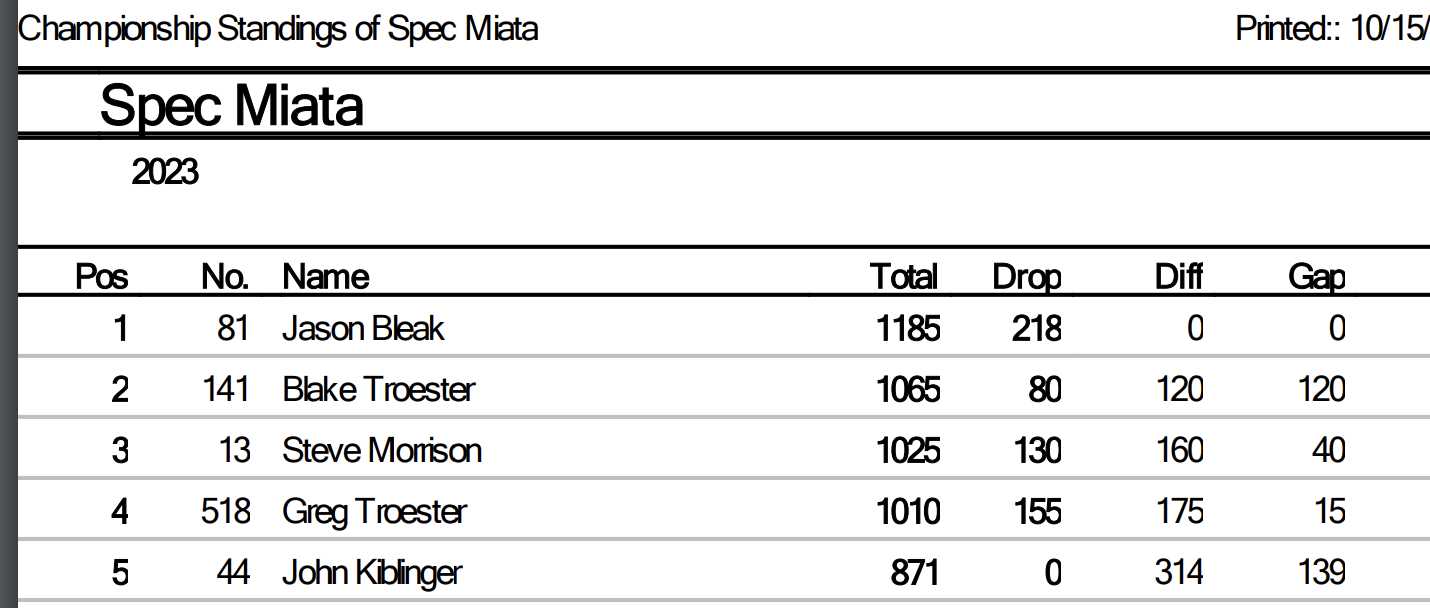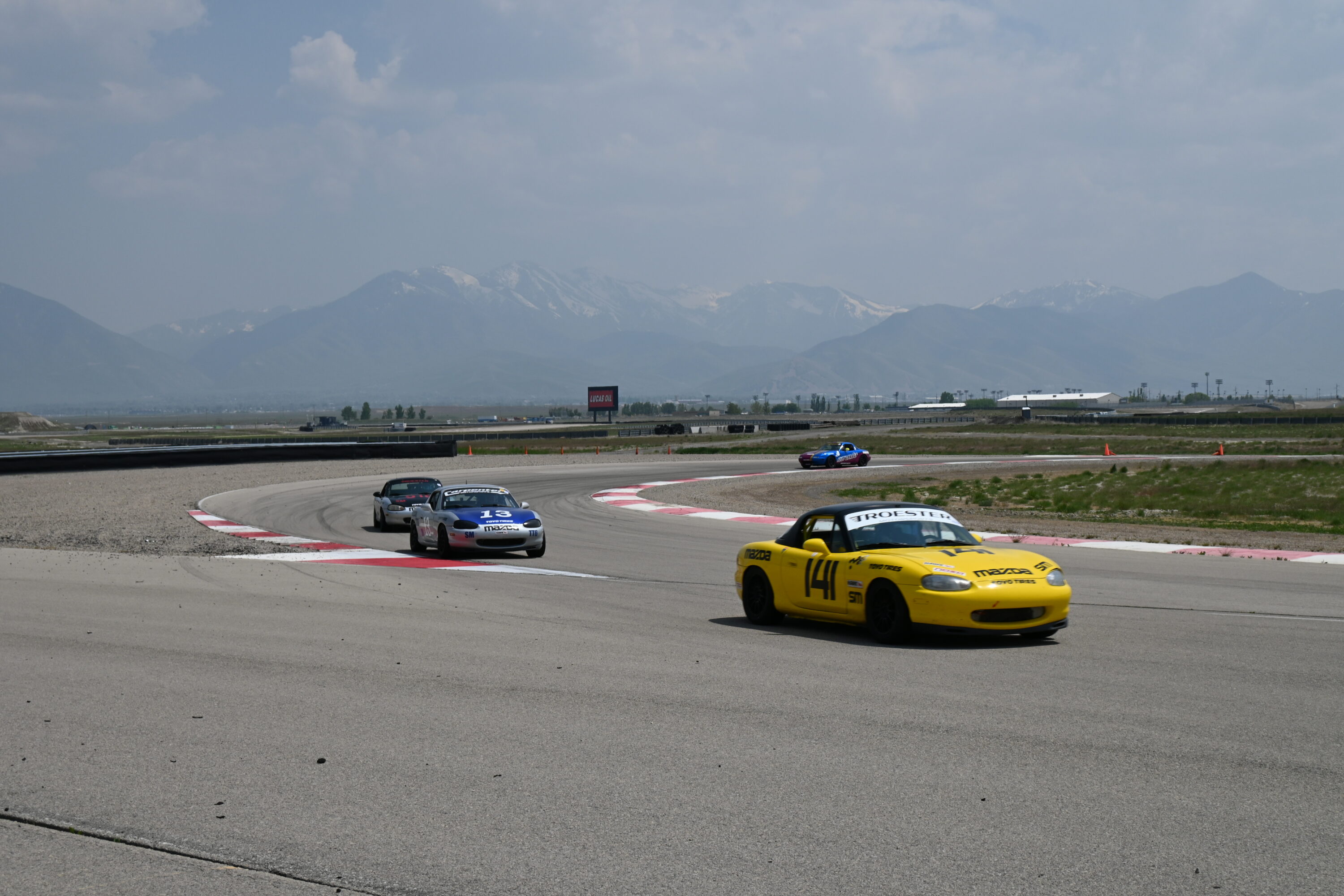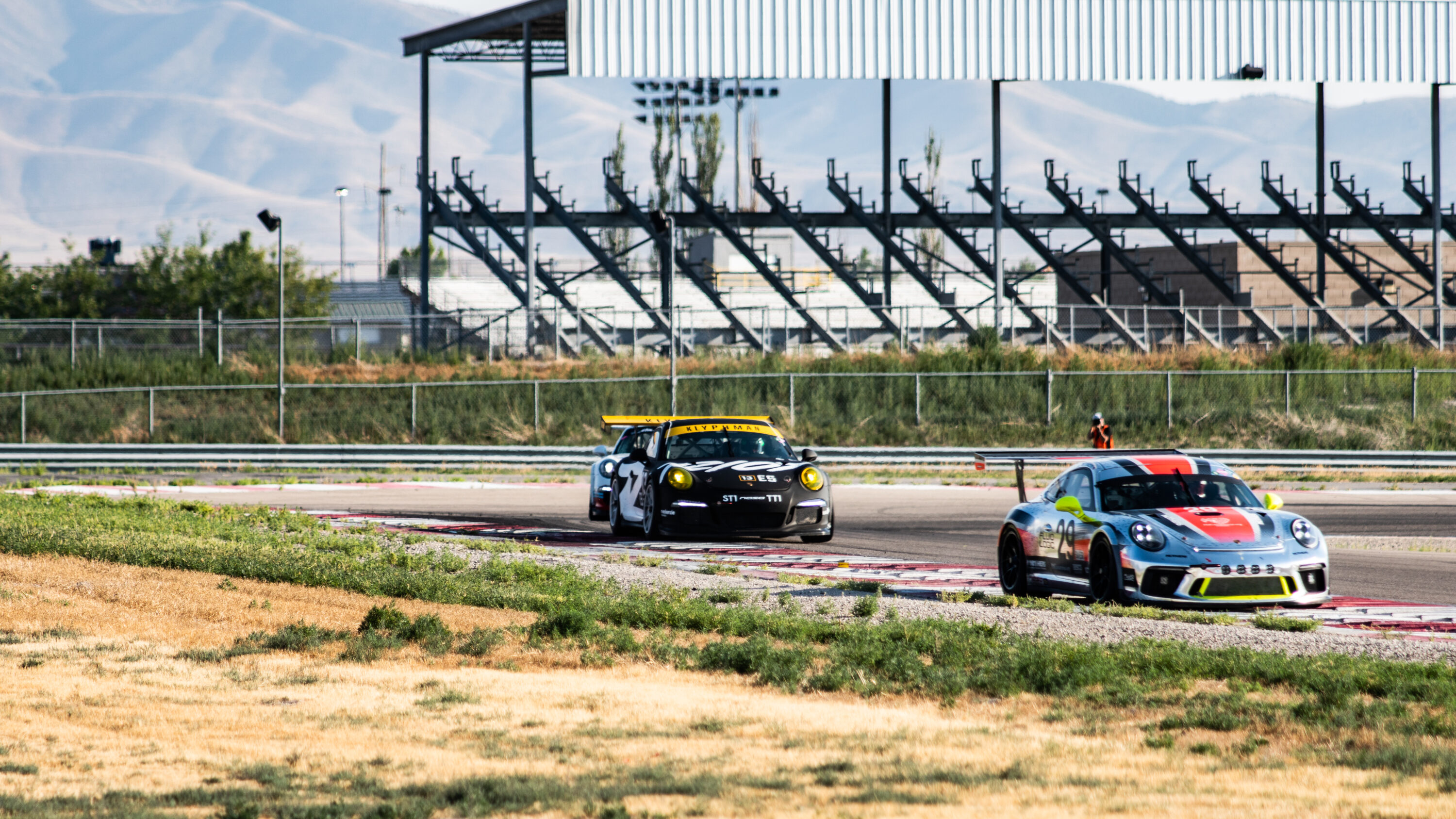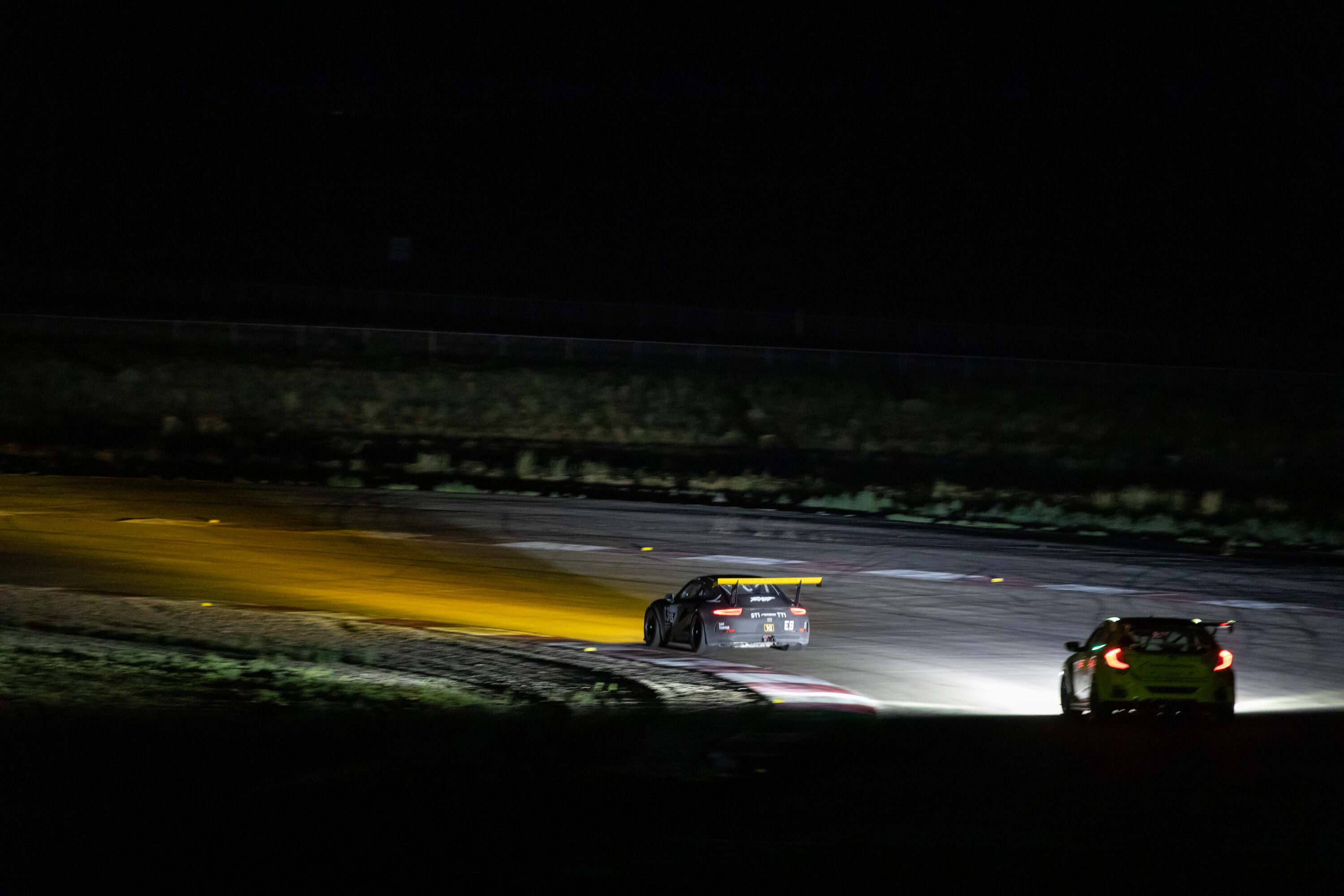Photo by Rich Jellerson – Dewfus Art
Last month wrapped up the 2023 NASA Utah racing season, and what a season it’s been! Coming out the other side, its been good to sit back and think about the season, where I’ve come as a driver, and what I’m thinking about for 2024.
To kick things off, here’s the last lap of the 2023 Spec Miata season, which came down to some strategic use of a frenemy to get a chance to make it onto the podium. It wasn’t enough to beat-out either car ahead of a a spot on the Season Championship podium, but it was certainly a highlight of the year.
The Thrill of Spec Racing
I started racing in 944 Spec back in 2014, shifted to Spec Miata in 2019, and don’t see myself changing classes anytime soon.
Spec racing of any kind is, in my opinion, the best bang-for-the-buck you can have. This season included some of the closest battles I’ve had to-date. Not all of them have ended the way I’d have preferred, either with losing positions and even a few significant contact incidents (which I detest — body work is the worst), but… knowing that my competitors and I were on as level a playing field as one could hope for — it has pushed me as a driver in multiple ways.
Camaraderie
Field sizes ebb and flow, but SM seems to be a perennial class of drivers from all walks of life. Competition was fierce this year and even got a little overzealous in the early part of the season, but as a group we continued to come together to demystify the rules and build a better class that strives to have clean, fair, close, and fun racing.
We’re at a point where, 9/10 times, close calls, incidents, or racing situations are discussed openly and with the goal of everyone benefitting. Whether it’s discussing contact, determining if a driver was blocking, or giving feedback to each other so that the whole class got faster… it’s been fantastic.
By building up a class of drivers who encourage each other to succeed and get better, we all get better. We have more fun and we gain friends at the track. This has extended beyond the regular season, as well — we’ll get together for karting events, organize pilgramiges to other tracks, and a host of non-racing activities.
At the end of this season, I’ve built more and stronger friendships through my hobby of racing — that’s a W.
Fighting the Ultimate Enemy: Ego
The clear ruleset of SM makes it easy to determine if a fellow competitor “has more motor” or is simply driving better than me that weekend. This puts the ego in check and, when we can overcome it, helps the driver re-focus their attention on what’s going on in the driver’s seat. Remaining humble and keeping a mindset of experimentation are key.
Numbers on the dyno matter — but only as relative measures. By organizing multiple “dyno days”, we were able to confirm a few soft motors, one out-of-state import with a hogged-out restricter plate, and… that most motors were all within a few HP of each other.
On any given day, a dyno may show 3–5 cars all putting out HP numbers in the 110s or the 130s range. Either the lower or upper end of these numbers might at first cause concern: are we all running “weak” cars? Are we all cheaters? Probably not. A “perfectly calibrated” dyno is not going to be available on any given day, so we’re looking at how we compare to each other — if we’re all within 3–5HP of each other… then it’s game-on!
That said… it’s still possible to sink a lot of money into a car, trying to buy as many tenths as possible. So one must be wary.
By eliminating the nagging thought “my motor is soft” (which is, by the way, a rather demoralizing reality to deal with), you can focus on the nut behind the wheel — the driver — and I found myself being more able to take a mental step back to evaluate my driving and situations I’m in.
The 3D Chess Match
Spec racing strives to equalize the capabilities of vehicles across sometimes a broad range of manufacturing years: body styles, suspension geometry, powertrain configurations, and so on. Using things like throttle-restriction plates that decrease how much air a larger engine can consume and lowering or raising the minimum weights different cars must meet, the goal is to make a “driver’s class” where many cars can compete at relatively low cost and high reliability.
This approach narrows the marginal advantages of differing cars as much as possible, leading to practice, qualifying, and race sessions that have cars separated by tenths or hundredths of seconds on a regular basis.
In that last video, you can see situations where I was “off-line” in an attempt to set myself up for potential situations unfolding ahead of me: Who would win-out in a certain corner? How could I position myself to bump the car ahead to compromise the leading car? When do I hold back to make a run in a later corner? When do I run tight to hopefully tag-along in a pass attempt ahead.
The 3D chess match in spec racing is fantastic, with multiple possible scenarios to consider while also driving at or near the limit and monitoring track conditions.
Having a cooler head in the later part of the season paid dividends, in both race results as well as enjoyment. Choosing not to take various opportunities led to missing-out on potentially one or two spots in the finishing order, which is a big deal, but… I was reminded at how badly is hurts to have significant contact that nearly cost both drivers their race or even the next one.
The nice thing about having a well-populated class with multiple clusters of cars running tightly at various paces is that you always have a chance to have a race — even if it’s for 12th place.
Fifteen Points From 3rd, Forty Points From 2nd
With Jason Bleak running away with the Season Championship as a result of his excellent pace and consistent execution led to a three-way battle to determine the final two steps on the podium at the end of the year.
Blake, Steve, and I ran more closely to each other as the season progressed, with many battles coming down to the last 1–2 laps of the race. At the end of it all, Blake secured 2nd place by mid-season, consistently finishing in P2 and leaving Steve and I to duke it out for 3rd.

So what do fifteen points equal? About two races.
The breakdown of points awarded per-position goes as such:
- 1st Place: 100 points
- 2nd Place: 90 points
- 3rd Place: 85 points
It goes down by 5 points until you hit the 70 point mark (6th place), where things flatten out quite considerably, only dropping by 1 point per position lost.
That means that winning counts for a lot — as it should — and by trading a position results in a significant difference over time.
For 3rd place in the Season Championship, that 15-point split between me and Steve being the result of 1–2 races, depending on which ones you consider.
In my opinion, a major deciding-factor was one race in the wet where Steve and I fought on the last lap of the Outer Loop for 1st, resulting in Steve coming out ahead and netting 10 points on me — the largest advantage a driver could gain by being ahead only one position. There were a few other races where the last-lap battle broke either way: either to me or to Steve. Those were important, but I knew that the one chance both of us had at 1st place was going to be a significant one in the end.
Looking at 2024
Though I’d much-rather be up on the steps, so to speak, with Jason and Blake this December, I’m mostly-content with my results this year. Trying “harder” wasn’t working, but striving to be slightly detached and more stoic about situations served me well. Throwing more money at tires for track time, as well as the never-ending wishlist in a car would’ve blown the budget out of the water and resulted in me living in the Team Garage with the black widow spiders…
So considering what 2024 holds: another season of racing, NASA Nationals coming to town, and another year of “other stuff” that exists on the weekends we’re not at the race track… I’m feeling confident I can maintain a level head and modulate my whims so that I don’t get caught-up in a spending spree, but still have another enjoyable season.
That said, there are some things I want to spend money on, from a car investment perspective. A bent rear subframe certainly limited my negative camber potential on the right-rear tire (crucial at UMC) and some offset bushings for the front upper control arms seems prudent to get tire temps where I’d like them to tbe on the right-front. We’ll see what other “while I’m in here” fixes I find along the way, but I (fortunately) have good life left in other major wear components (fingers crossed in the motor department) and it’s looking like another season where I can spend the majority of my time driving, not wrenching.
NASA Nationals will be interesting. With a couple of highly-active SM regions nearby (Colorado and SoCal) and some others that will probably make a showing (Arizona, NorCal), along with expected appearances from top-talent nationwide… it’s a tempting prospect to see how far up the ladder I could climb while trying to avoid a knucklehead YOLOing it up the inside of T1, trying to vie for the podium from P20 off the green flag.






